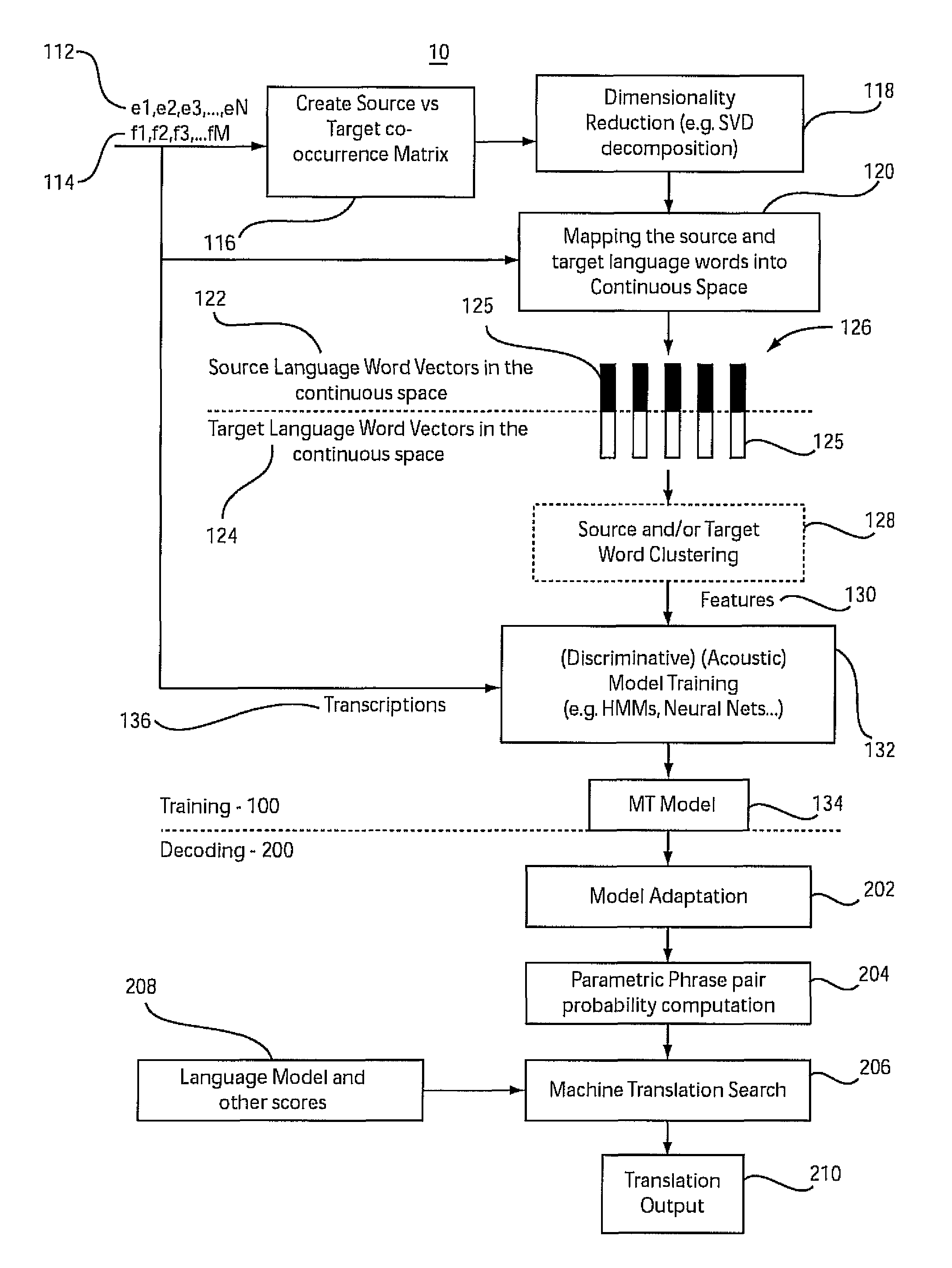Machine translation in continuous space
a technology of continuous space and machine translation, applied in the field of machine translation systems and methods, can solve the problems of lack of generalization, lack of adaptation, lack of discrimination, etc., and achieve the effect of reducing the dimensionality of the matrix
- Summary
- Abstract
- Description
- Claims
- Application Information
AI Technical Summary
Benefits of technology
Problems solved by technology
Method used
Image
Examples
Embodiment Construction
[0017]In accordance with the present principles, machine translation is performed in continuous space. This is achieved be employing a trainable parametric model for representing word / phrase translation pairs using word / phrase representations in a continuous parameter space. Then, using the continuous space representations, a translation model may be built based on, e.g., Tied-Mixture Gaussian probability density functions or other Hidden Markov Models (HMM). By doing so, we convert the machine translation problem to an acoustic model training problem in speech recognition.
[0018]For acoustic models, a large model can be efficiently adapted using just a few utterances. This is primarily achieved by exploiting the inherent structure (several thousand context dependent states are shared by all the words in the dictionary) in the model by techniques like maximum likelihood linear regression (MLLR).
[0019]As such, we can improve the state-of-the-art machine translation systems in several ...
PUM
 Login to View More
Login to View More Abstract
Description
Claims
Application Information
 Login to View More
Login to View More - R&D
- Intellectual Property
- Life Sciences
- Materials
- Tech Scout
- Unparalleled Data Quality
- Higher Quality Content
- 60% Fewer Hallucinations
Browse by: Latest US Patents, China's latest patents, Technical Efficacy Thesaurus, Application Domain, Technology Topic, Popular Technical Reports.
© 2025 PatSnap. All rights reserved.Legal|Privacy policy|Modern Slavery Act Transparency Statement|Sitemap|About US| Contact US: help@patsnap.com



